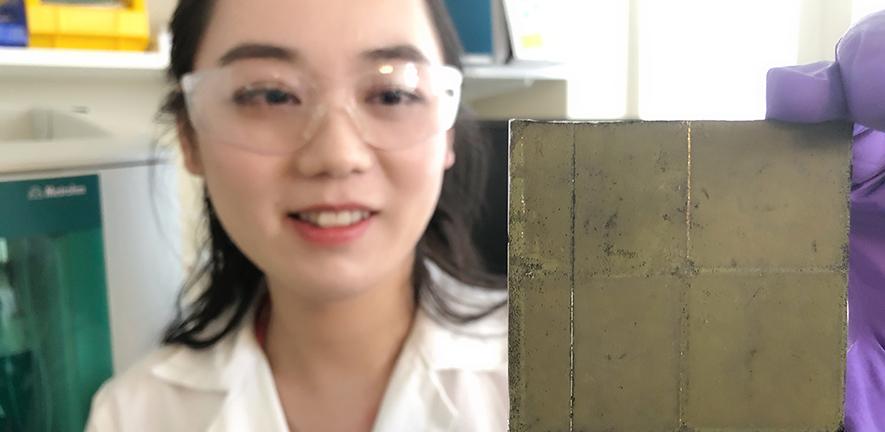Researchers from Cambridge University have developed a wireless device that converts sunlight, CO2, and water into carbon-neutral fuel. It is a major step in achieving artificial photosynthesis.
The device is based on an advanced ‘photosheet‘ technology and converts sunlight, carbon dioxide, and water into oxygen and formic acid which is a storable fuel. Moreover, it is scalable and can be used in solar farms.
Converting carbon dioxide, sunlight, and water into fuel is a promising way to reduce carbon emissions and transition away from fossil fuels. However, it has some challenged like producing clean fuel, without waste materials and if there are byproducts then separation is also a challenge.
“It’s been difficult to achieve artificial photosynthesis with a high degree of selectivity so that you’re converting as much of the sunlight as possible into the fuel you want, rather than be left with a lot of waste,” said first author Dr. Qian Wang from Cambridge’s Department of Chemistry.
“In addition, storage of gaseous fuels and separation of by-products can be complicated — we want to get to the point where we can cleanly produce a liquid fuel that can also be easily stored and transported,” said Professor Erwin Reisner, the paper’s senior author.
Reisner’s group developed a solar reactor based on an ‘artificial leaf‘ design back in 2019 which also used sunlight, carbon dioxide, and water to produce a fuel, known as syngas. The new device is built similarly but works in a different way to produce formic acid.
While the artificial leaf used components from solar cells, the new device doesn’t require these components and relies solely on photocatalysts embedded on a sheet to produce a so-called photocatalyst sheet.
In addition, this new technology is more robust and produces clean fuel that is easier to store and shows potential for producing fuel products at scale.
The current prototype or test unit of the device is 20 square centimeters in size, but the researchers say that it should be relatively straightforward to scale it up to several square meters.
“We were surprised how well it worked in terms of its selectivity — it produced almost no by-products,” said Wang. “Sometimes things don’t work as well as you expected, but this was a rare case where it actually worked better.”
The carbon-dioxide converting cobalt-based catalyst that they used is also easy to make and relatively stable.
While this is a big achievement, the researchers are trying to improve the efficiency and also are experimenting with variety of catalysts before starting commercial usage of this device.
The team of Professor Kazunari Domen from the University of Tokyo was also a part of this research
“We hope this technology will pave the way toward sustainable and practical solar fuel production,” said Reisner.
Journal Reference:
Qian Wang, Julien Warnan, Santiago Rodríguez-Jiménez, Jane J. Leung, Shafeer Kalathil, Virgil Andrei, Kazunari Domen, Erwin Reisner. Molecularly engineered photocatalyst sheet for scalable solar formate production from carbon dioxide and water. Nature Energy, 2020; DOI: 10.1038/s41560-020-0678-6

